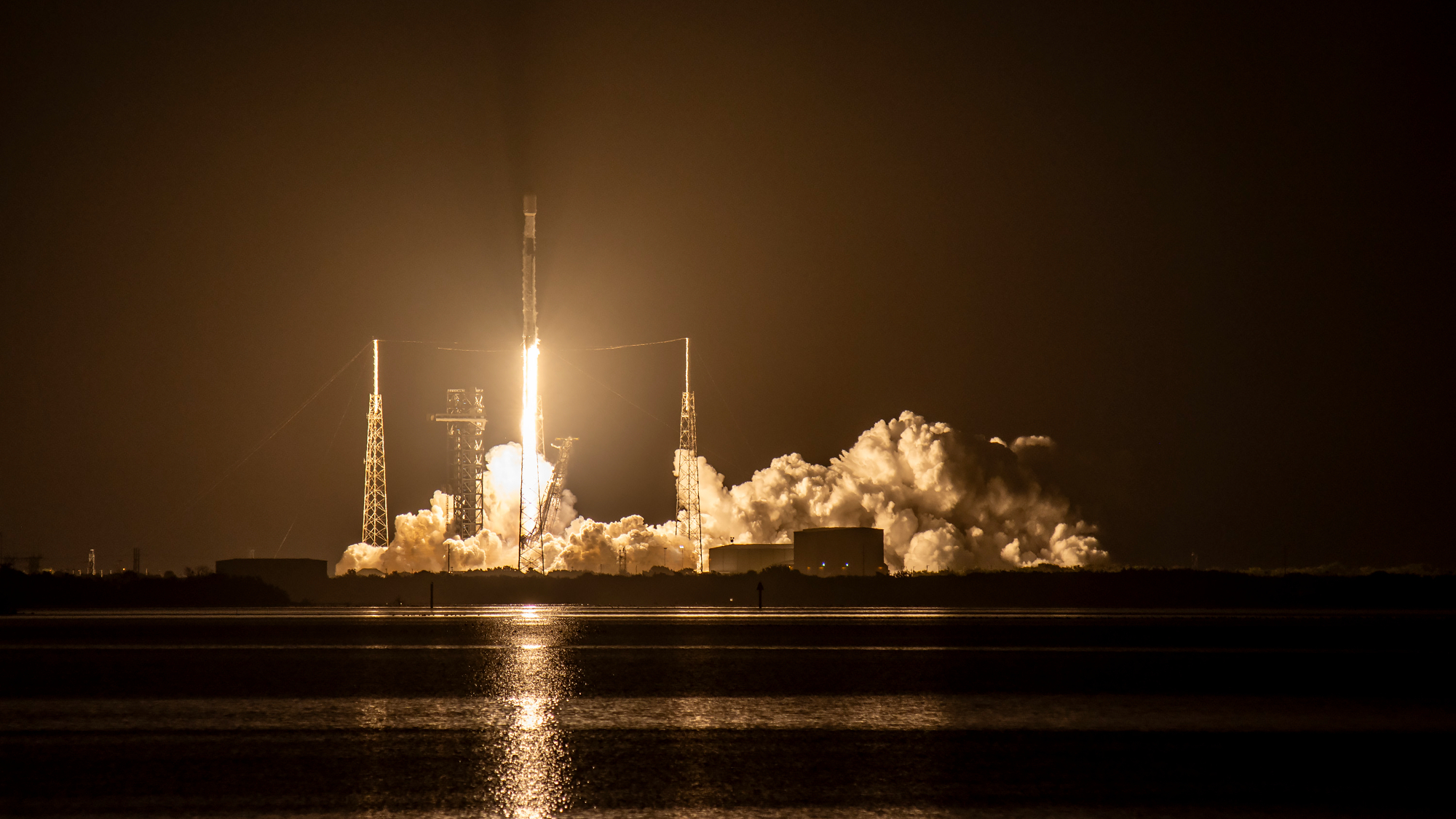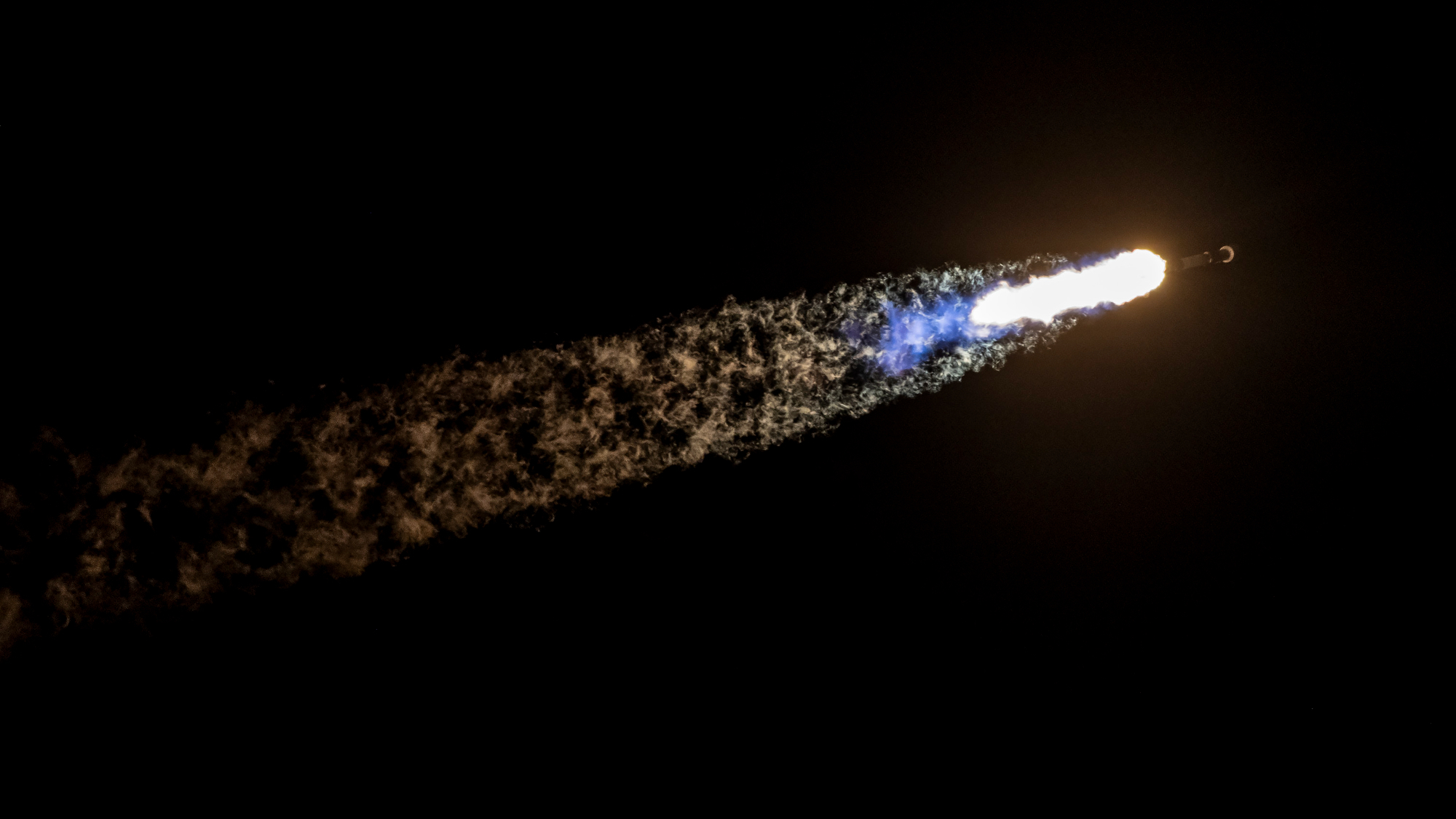SpaceX just notched another launch milestone.
A Falcon 9 rocket carrying 23 Starlink spacecraft lifted off from Cape Canaveral Space Force Station on Sunday (Jan. 14) at 8:52 p.m. EST (0152 GMT on Jan. 15).
Everything went smoothly, which SpaceX celebrated in a post on X later that evening.
"Falcon 9 delivers 23 @Starlink satellites to orbit from Florida — completing our 300th successful launch!" SpaceX wrote in the X post, which shared a few photos of the liftoff.
Related: Starlink satellite train: How to see and track it in the night sky

The Falcon 9's first stage came back to Earth about eight minutes after liftoff, successfully landing on the drone ship A Shortfall of Gravitas, which was stationed in the Atlantic Ocean.
It was the 12th launch and landing for this booster, according to a SpaceX mission description. Among its previous flights were seven other Starlink missions.
Get the Space.com Newsletter
Breaking space news, the latest updates on rocket launches, skywatching events and more!
The Falcon 9's upper stage continued hauling the 23 Starlink satellites to low Earth orbit tonight, deploying them there about 64.5 minutes after liftoff.

Sunday night's launch was the second part of a Starlink doubleheader: A Falcon 9 also lofted a Starlink batch from California's Vandenberg Space Force Base early Sunday morning.
Starlink is SpaceX's broadband megaconstellation. It currently consists of more than 5,250 operational spacecraft, but that number is increasing all the time, as Sunday's two liftoffs show.
Join our Space Forums to keep talking space on the latest missions, night sky and more! And if you have a news tip, correction or comment, let us know at: community@space.com.

Michael Wall is a Senior Space Writer with Space.com and joined the team in 2010. He primarily covers exoplanets, spaceflight and military space, but has been known to dabble in the space art beat. His book about the search for alien life, "Out There," was published on Nov. 13, 2018. Before becoming a science writer, Michael worked as a herpetologist and wildlife biologist. He has a Ph.D. in evolutionary biology from the University of Sydney, Australia, a bachelor's degree from the University of Arizona, and a graduate certificate in science writing from the University of California, Santa Cruz. To find out what his latest project is, you can follow Michael on Twitter.









